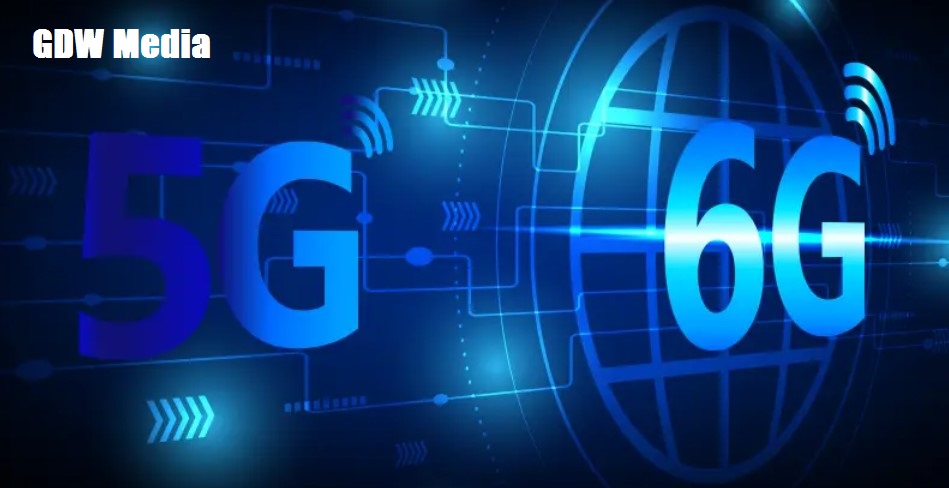
In 2025, the world is more connected than ever, thanks to the rapid expansion of 5G and the emerging promise of 6G connectivity. As they power innovations like autonomous vehicles, smart cities, and real-time healthcare. With the 5G market projected to reach $427.7 billion by 2028 and 6G expected to hit $40.2 billion by 2030, these networks are transforming industries and fueling global curiosity. This blog explores the impact of 5G and 6G, their applications, and why they’re among the top trending technology topics of 2025.
What Are 5G and 6G Connectivity?
5G, the fifth generation of wireless networks, delivers speeds up to 100 times faster than 4G, with ultra-low latency (1 millisecond) and the ability to connect millions of devices per square kilometer. In 2025, 5G supports 27 billion IoT connections globally, enabling real-time data transfer for applications like autonomous driving and smart grids. 6G, still in development, promises even faster speeds (up to 1 terabit per second), AI-driven network optimization, and holographic communication, with commercial rollout expected by 2030. Searches for “5G in autonomous vehicles” and “6G innovation” reflect growing interest in these advancements.
Real-World Applications of 5G and 6G
5G and 6G are revolutionizing industries with their high-speed, low-latency capabilities:
- Autonomous Vehicles: 5G enables vehicle-to-everything (V2X) communication, reducing reaction times to 2 milliseconds, enhancing road safety.
- Smart Cities: 5G-powered IoT sensors optimize traffic, energy, and waste management, cutting urban emissions by 15% in some cities.
- Healthcare: 5G supports remote surgeries with real-time precision, while 6G’s holographic interfaces could enable virtual doctor visits by 2030.
- Entertainment: 5G delivers 8K streaming and immersive AR/VR gaming, with 6G promising seamless holographic experiences.
These applications drive searches for “smart city technology” and “6G networks,” as businesses and consumers explore their potential.
Challenges and Developments in 2025
While 5G is widely adopted, challenges include high infrastructure costs and cybersecurity risks, with 5G networks being 20% more vulnerable to attacks due to increased connectivity. 6G faces hurdles in developing AI-driven architectures and sustainable energy solutions, as it consumes 10 times more power than 5G. In 2025, companies like Nokia and Ericsson are advancing 6G research, focusing on digital twins and terahertz frequencies. The global push for connectivity has led to 5G coverage in 70% of urban areas, with searches for “5G technology challenges” reflecting concerns about accessibility and security.
Why 5G and 6G Are Trending
The global rollout of 5G and anticipation for 6G are fueling searches, with 5G supporting 27 billion IoT connections and 6G promising AI-driven networks. X posts highlight 5G’s role in “powering the future,” with users excited about autonomous vehicles and smart cities. The 6G market’s projected $40.2 billion value by 2030 drives searches for “6G innovation,” as industries prepare for next-gen connectivity. Capgemini notes 65% of telecom leaders prioritize 5G for business transformation in 2025.
Key Information on 5G and 6G Connectivity
The table below summarizes key details about 5G and 6G connectivity, addressing trending search queries for quick reference.
| Category | Details |
|---|---|
| Technology | 5G and 6G Connectivity |
| Key Applications | Autonomous vehicles, smart cities, telemedicine, immersive entertainment |
| Market Size | $427.7 billion (5G, 2028); $40.2 billion (6G, 2030) |
| Top Companies | Nokia, Ericsson, Huawei, Qualcomm, Samsung |
| Search Trends | “5G technology 2025,” “6G networks,” “smart city technology” |
| Challenges | High infrastructure costs, cybersecurity risks, 6G energy consumption |
| Adoption Timeline | 5G: 70% urban coverage in 2025; 6G: Commercial rollout by 2030 |
Note: Market size and adoption timelines are based on industry projections.
The Future of Connectivity
By 2030, 6G is expected to enable holographic communication and AI-driven networks, while 5G will continue to expand, reaching 85% global coverage. Innovations like network slicing and digital twins will enhance efficiency, with 5G reducing energy consumption in smart grids by 20%. As searches for “5G in autonomous vehicles” grow, connectivity remains a cornerstone of innovation.
Stay Connected with 5G and 6G Updates
5G and 6G are shaping the future of technology, and staying informed is key. Follow updates on X or subscribe to our blog for the latest tech insights. What excites you about next-gen connectivity? Share your thoughts in the comments!
Frequently Asked Questions About 5G and 6G Connectivity
1. What is the difference between 5G and 6G?
5G offers high-speed, low-latency connectivity, while 6G, expected by 2030, promises terabit speeds, AI-driven networks, and holographic communication.
2. Why is 5G trending in 2025?
5G’s global rollout, supporting 27 billion IoT connections, drives searches for “5G technology 2025” due to its role in smart cities and autonomous vehicles.
3. What are the main applications of 5G?
5G supports autonomous vehicles, smart cities, telemedicine, and 8K streaming, enhancing efficiency and connectivity.
4. When will 6G be available?
6G is expected to launch commercially by 2030, with research advancing in 2025 for AI-driven networks and terahertz frequencies.
5. What is the market size of 5G and 6G?
The 5G market is projected to reach $427.7 billion by 2028, with 6G expected at $40.2 billion by 2030.
6. What are the challenges of 5G and 6G?
Challenges include high infrastructure costs, 5G’s cybersecurity risks, and 6G’s energy consumption needs.
7. Which companies are leading in 5G and 6G?
Nokia, Ericsson, Huawei, Qualcomm, and Samsung are key players driving connectivity innovation.
8. How does 5G impact autonomous vehicles?
5G enables V2X communication, reducing reaction times to 2 milliseconds, improving road safety.
9. What is the role of 6G in smart cities?
6G will enable AI-driven urban management and holographic interfaces, enhancing smart city efficiency by 2030.
5G and 6G connectivity are transforming the world in 2025, powering smart systems and driving searches for their applications. With 5G’s global reach and 6G’s futuristic promise, these technologies are shaping the future of innovation.
 GDW Media
GDW Media


